5 Future Marketing Trends to Look Out For with Competitive Intelligence
The business world is in a constant state of evolution, even the competitive intelligence (CI) industry is in a continual state of flux. Find out...
Unearth the competitive intelligence treasures of LinkedIn and build a monumental program for business growth. Start your journey today.
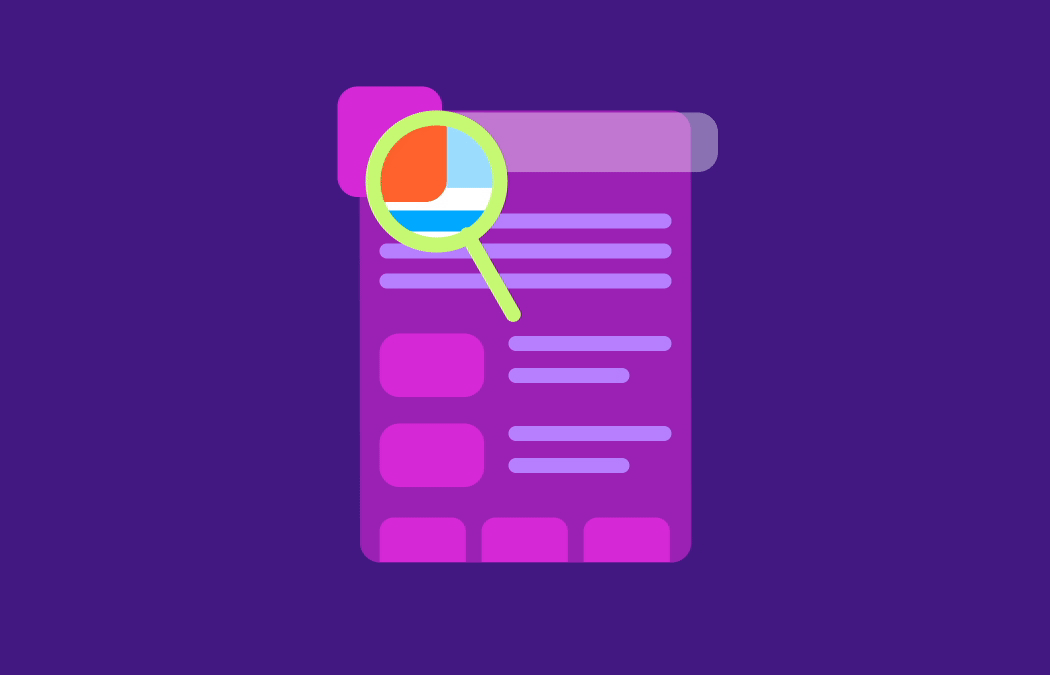
Does the thought of digging through LinkedIn, hunting for growth prospects and nuggets of competitive intelligence make you feel like you're laying the foundation for a colossal pyramid, one brick at a time?
Sure, scanning LinkedIn's horizons may feel a bit like you’re laying the cornerstone for a pyramid intended to touch the clouds. Huge undertaking for sure.
And in truth, building a competitive intelligence program inclusive of LinkedIn might feel like single-handedly sculpting blocks from a quarry, when you do it manually. But here's the good news: you won't be hauling those blocks alone.
We'll clarify which kernels of information from LinkedIn are the actual gold dust, and teach you how to gather them into an awe-inspiring narrative that'll resonate throughout your company. This goes beyond stirring the spirit of your sales team — we'll also clear up some of the most obscure puzzles people encounter regarding LinkedIn competitive intelligence.
Ready to embark on this monumental (but totally doable) building project? Let's dive in.
Before you set off on your LinkedIn exploration to uncover competitive intelligence, it's important to make sure your very first brick - your personal LinkedIn profile - is sturdy, engaging and skillfully chiseled. You won’t use your company's profile here.
Operating from your personal account is like wearing the appropriate attire in our metaphorical pyramid construction project. It makes you a credible explorer as you delve into the depths of LinkedIn's vast landscape. A profile that's been meticulously carved with the following elements:
You can give your profile even more depth by regularly posting thought-provoking content such as fresh-off-the-press articles and new videos. A robust, active profile shows authority and builds trust.
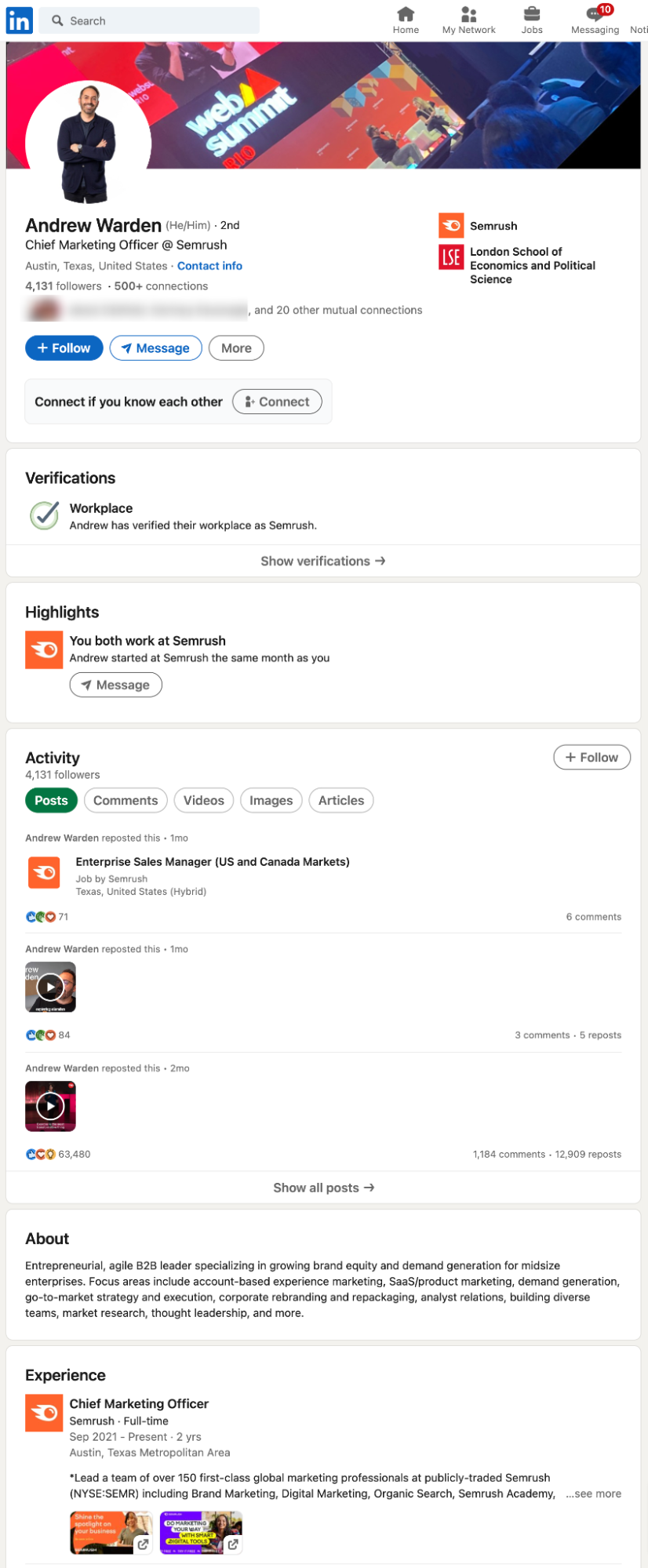
Once you've sculpted a resonant LinkedIn profile, build your LinkedIn competitive intelligence blueprint in four steps:
Now it’s time to make use of the modern functions of LinkedIn (we're building a modern pyramid, after all!), depending on what competitive intelligence data you are looking to collect.
Let’s look at how each of your teams can benefit from your LinkedIn building project. You may also enjoy this article on the 7 essential competitive intelligence reports that empower all your teams.
Assessing the activity of HR and compensation teams on LinkedIn will give you direct insight into your competitor’s hiring practices (rival pyramid builders?), which in turn will help you assess the health of your competitor’s business.
You can find information about HR and compensation teams on Linkedin in a few ways.
First, you can look for competitor job openings on LinkedIn. Navigate to the “Jobs” tab at the top-middle part of the page. Click “Jobs” and enter your competitor's name into the search bar.
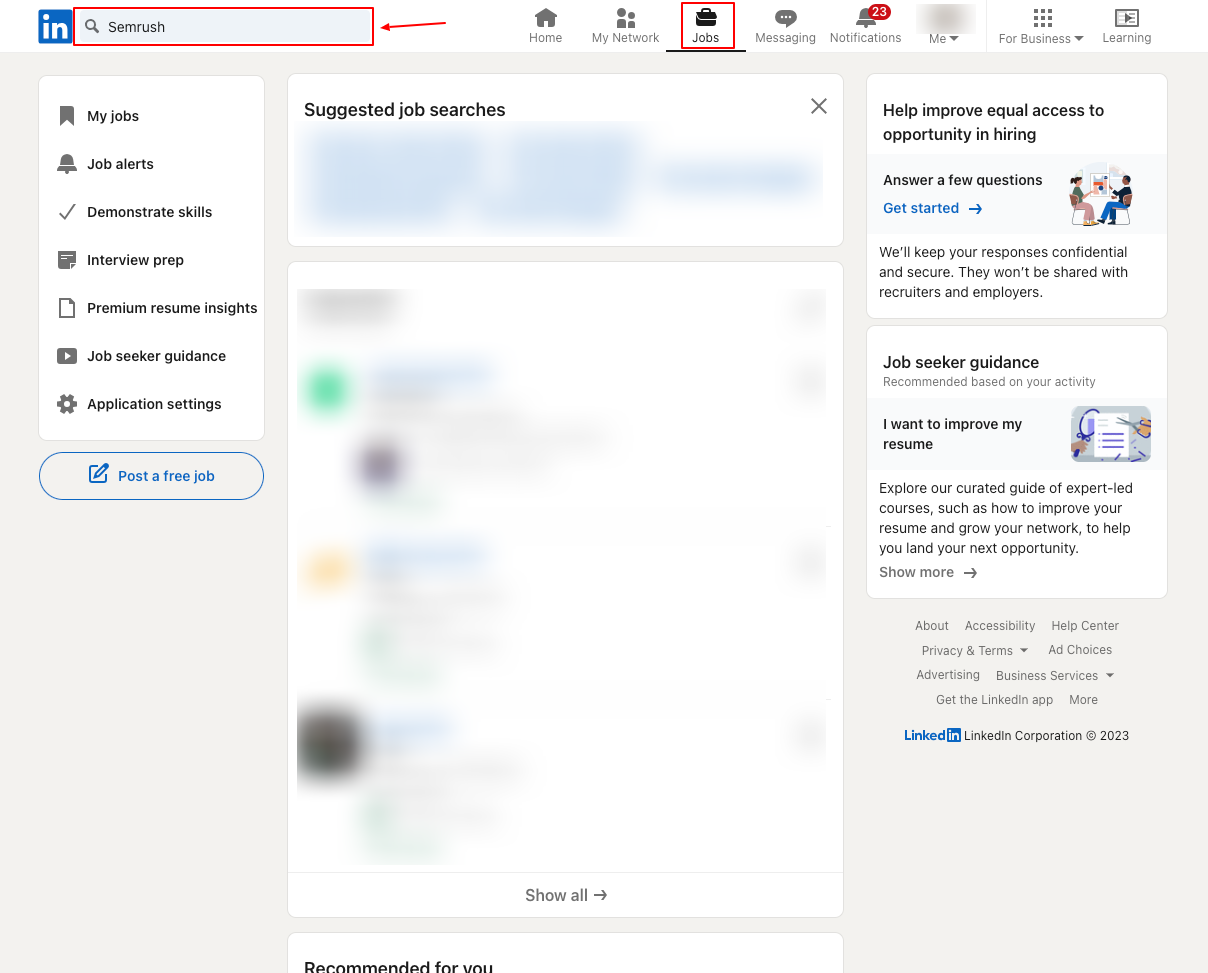
Once you click the return button, you land on the results page. If your competitor has a job opening, click on that result.
Pro Tip: If you want access to deeper LinkedIn insights, you must have a pro or business account. This unlocks features like “Meet the hiring team.”
Take a look at the first column of information. Some companies choose to give a lot away in their job listings. You might even see the salary range for open positions, the number of employees working at the company, what skills they are looking to hire for, etc.
Next, if you have a business or professional LinkedIn account, you may see “Meet the hiring team” in a box below the basic job description.
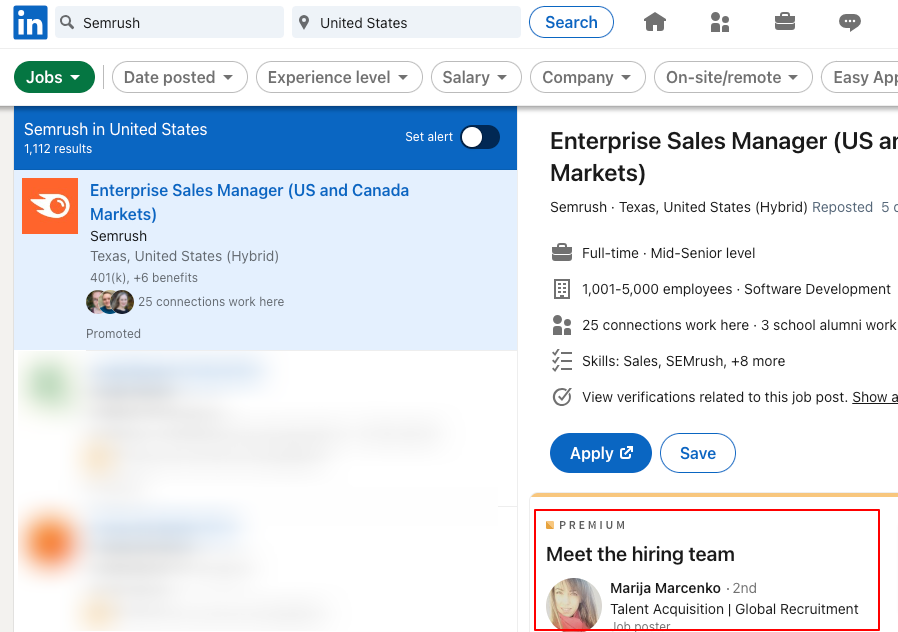
Click on the hiring team member’s profile. Depending on how unlocked their profile is, you can gain a ton of insight into their business practices, how they view hiring, how they get candidates in the door, and more.
You can follow this person or just collect the information you seek and move on. Following them will allow you to continue to gather competitive intel from their postings and profile updates without having to search for them each time you need to update your intel.
So, the HR/compensation team data you collect might look like this:
Competitor A:
Competitor B:
Competitor C:
… And so on. You can manually enter all this information into a spreadsheet for an initial competitive analysis, but be warned: it's time-consuming to maintain and update, which is why we recommend adopting competitive intelligence automation.
Pro tips:
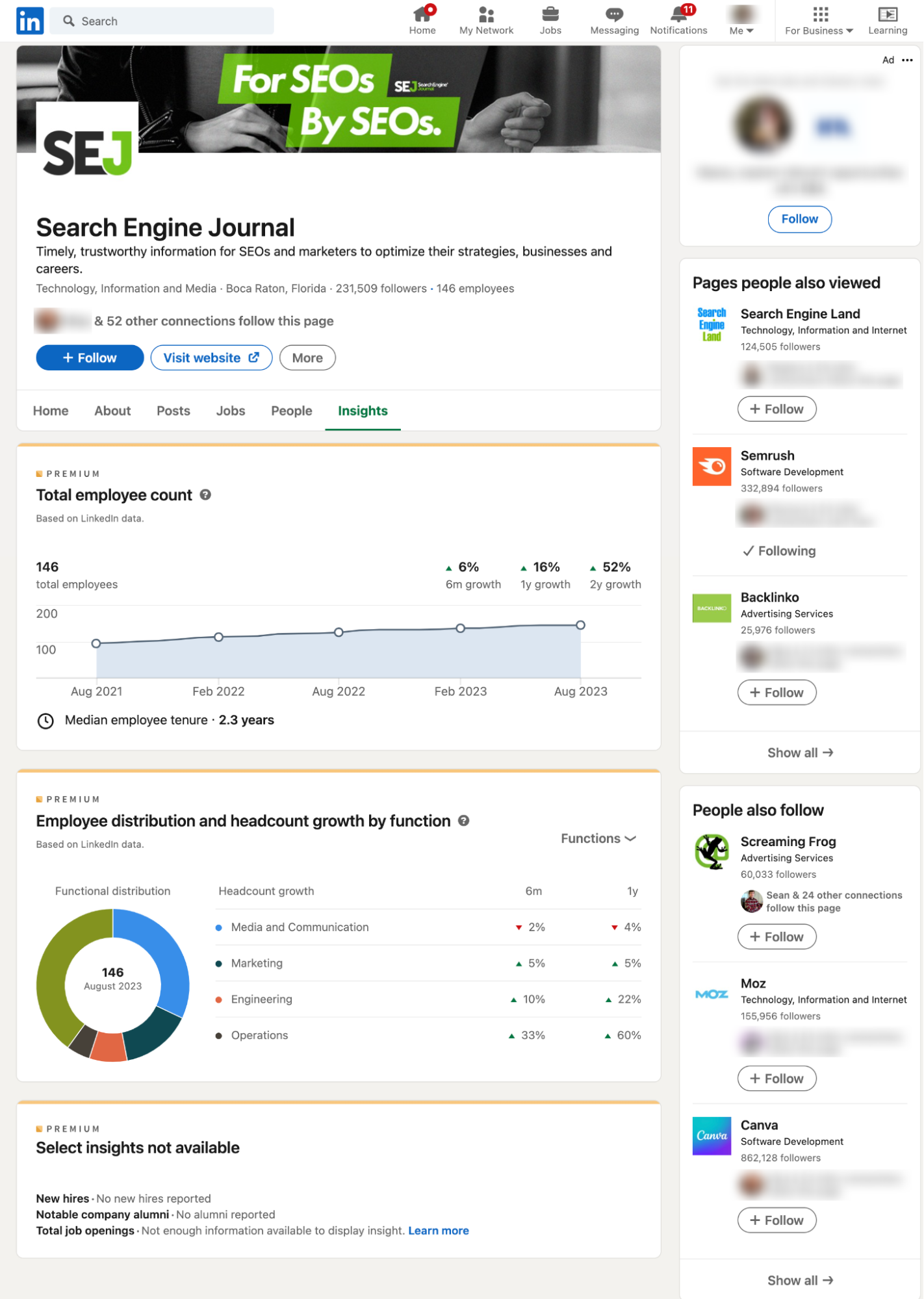
Marketing is the richest area of competitive intelligence data on LinkedIn. Some of the ways to use the professional social media platform to gain valuable insights into competitor brand image and marketing strategies include:
LinkedIn's advanced search feature is your trusty multi tool for competitive intelligence. You can use targeted keywords, filters, and other specific criteria to narrow your search and uncover niche insights into your competition.
At a glance, you can get company overviews, details about products, employees, and more. Often the overview provides an excellent peek into the messaging a company uses to talk about itself and its offerings.
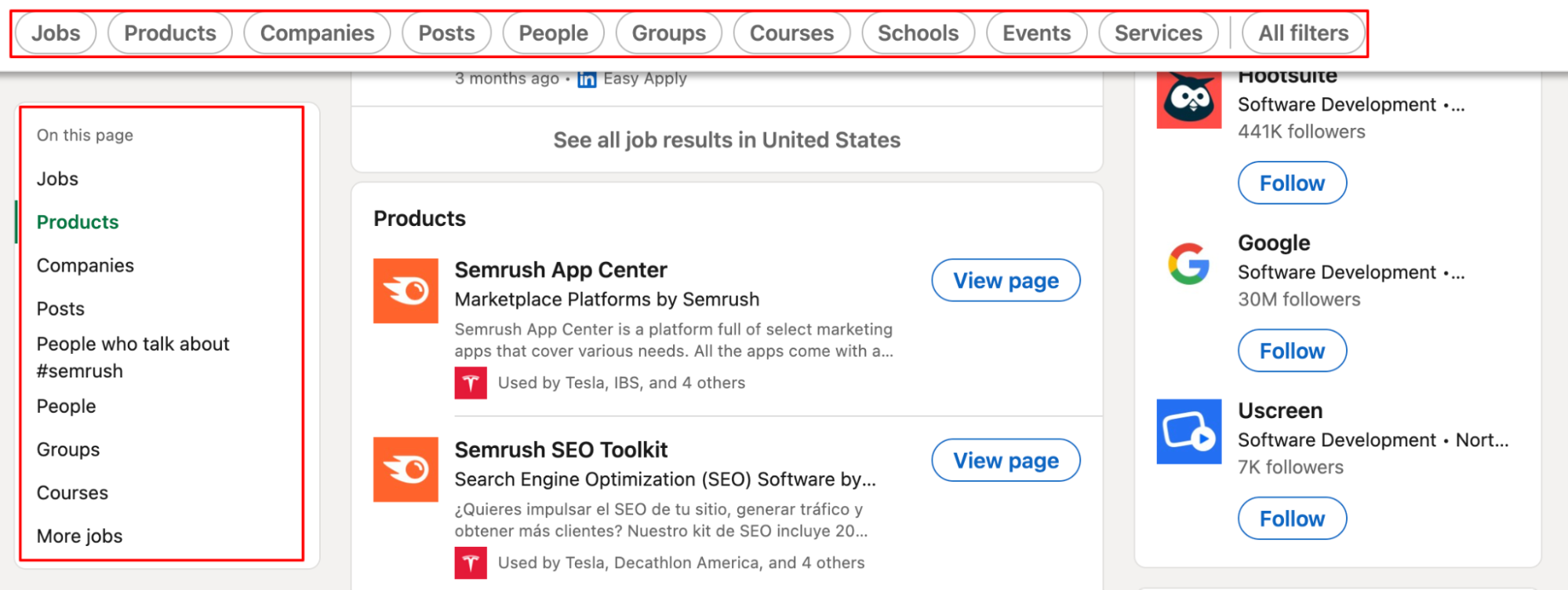
LinkedIn company pages provide a wealth of competitive insights for your marketing teams. By following competitors’ company pages, your team can stay informed about and respond to:
Pssst… Kompyte will do this for you.
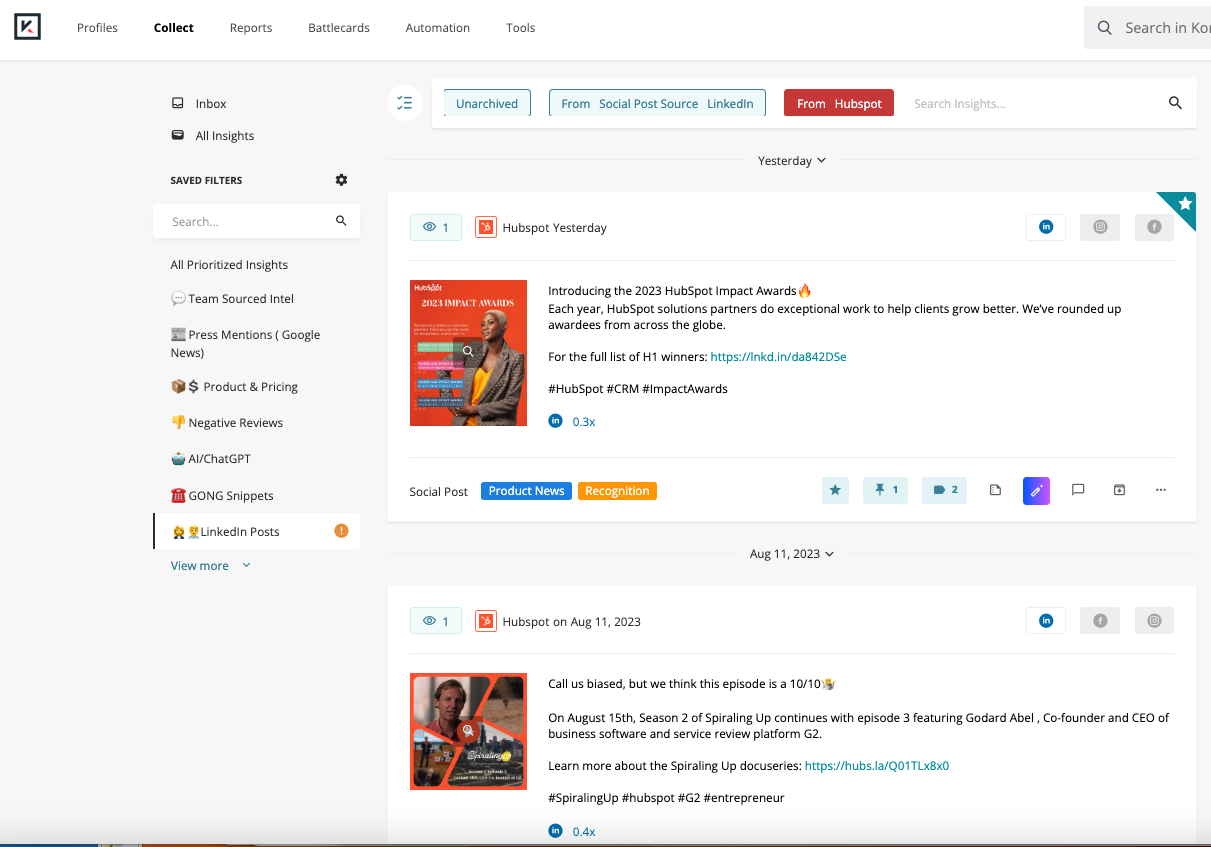
Start your excavation with a list of c-suite positions you plan to focus on (i.e. CEO, CTO, CMO, etc.). This will keep you focused.
What are you looking for here?
Knowing decision-makers' movements empowers your organization to make more informed, strategic decisions regarding investments, partnerships, roadmaps, and more. And many top leaders invest heavily in their LinkedIn presence, making it a veritable goldmine of competitive insights.
Your organization can gain a competitive edge by spotting opportunities and weaknesses among the competition’s highest ranks.
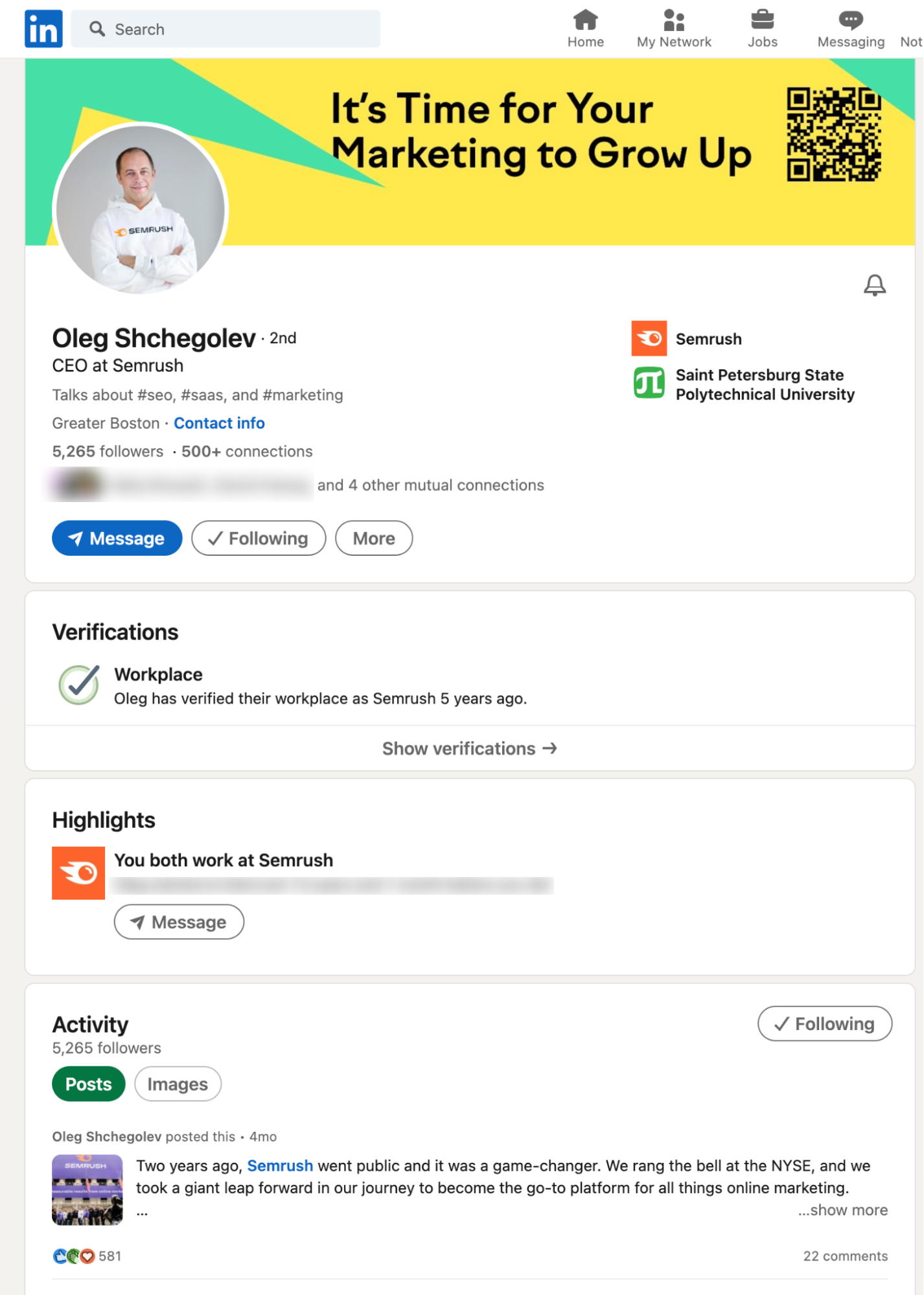
Pro tips:
LinkedIn is a popular channel for spreading the word about company events via LinkedIn Events Pages.
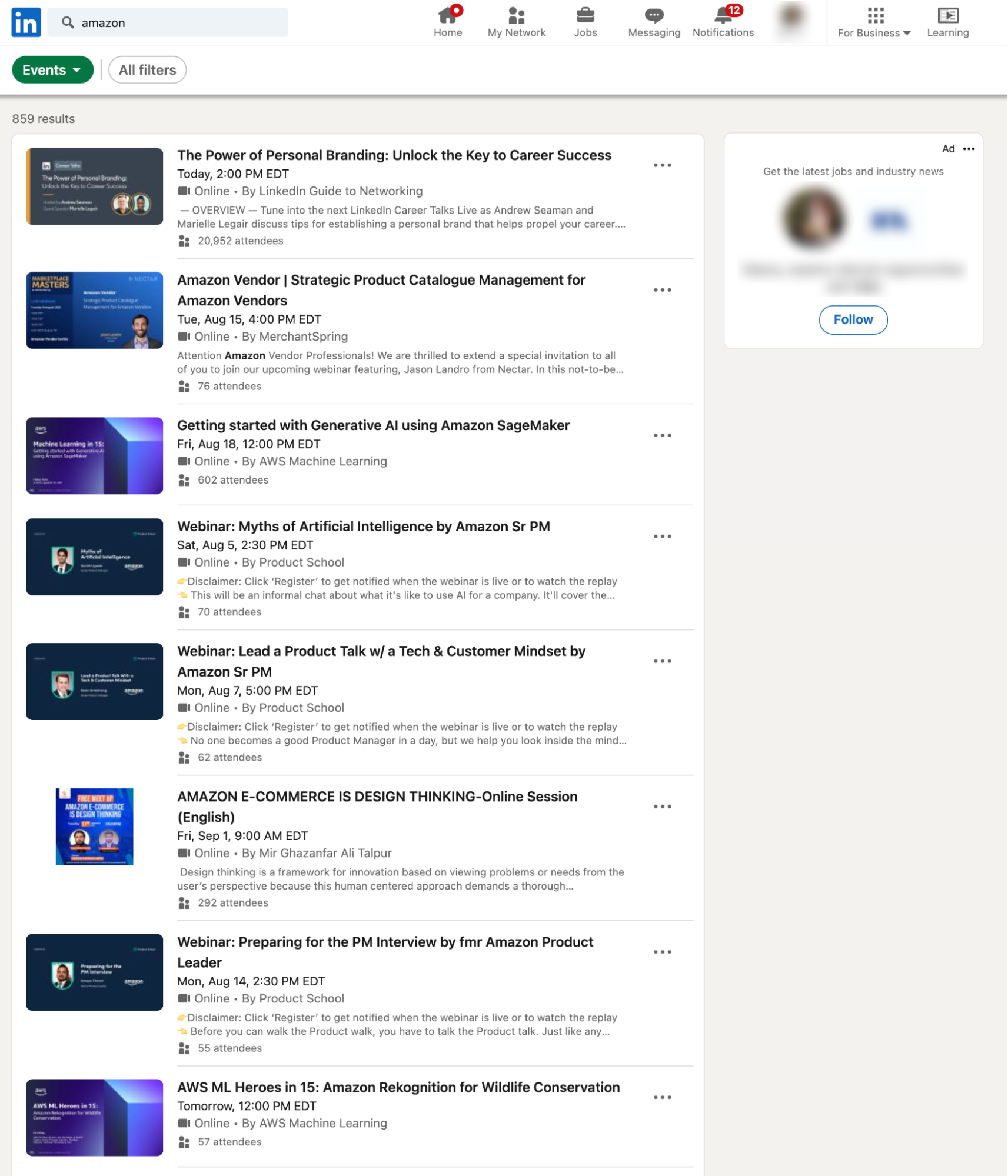
These events can give you insight into a company’s messaging, new service/product offerings, and other marketing tactics they leverage to attract customers.
Here’s how:
Using LinkedIn for competitive intelligence for product and innovation teams allows you to keep an eye on their business-building efforts.
This information can help you refine your product development and marketing efforts, identify market opportunities, and help you craft a stellar go-to-market strategy. You can use LinkedIn to:
Competitive intelligence analysis often churns out a veritable mountain of data, and you may at this point feel more overwhelmed than when you started. But remember that each little insight is a brick in your competitive intelligence pyramid of glory. You just have to stack them in the right places and for the right people.
The sections above outlined some of the individual nuggets each team would use. Now, just choose a method for distributing them:
Gathering this data manually takes a lot of work. Think hauling bricks up a hill in summer temperatures. Unfortunately, keeping your program working isn’t a one-time project, either. To continue working effectively, it must be kept up to date.
If you decide to take this on using analog techniques, you might end up with a mess of a Google Spreadsheet.
Not only will you end up with an awkwardly-large document, but now there’s a virtual “keep out, construction zone” tape around the pyramid that should be enabling teams to build your business and close more sales! If it’s not easy to access and skim, you’ll be the only one using it.
So, you may want to explore a platform like Kompyte—which offers detailed and easy ways to track your most important competitive intelligence data. Not quite ready for that? Start with our free, editable Competitive Intelligence Analysis Template that includes:
This is how it looks in Kompyte:
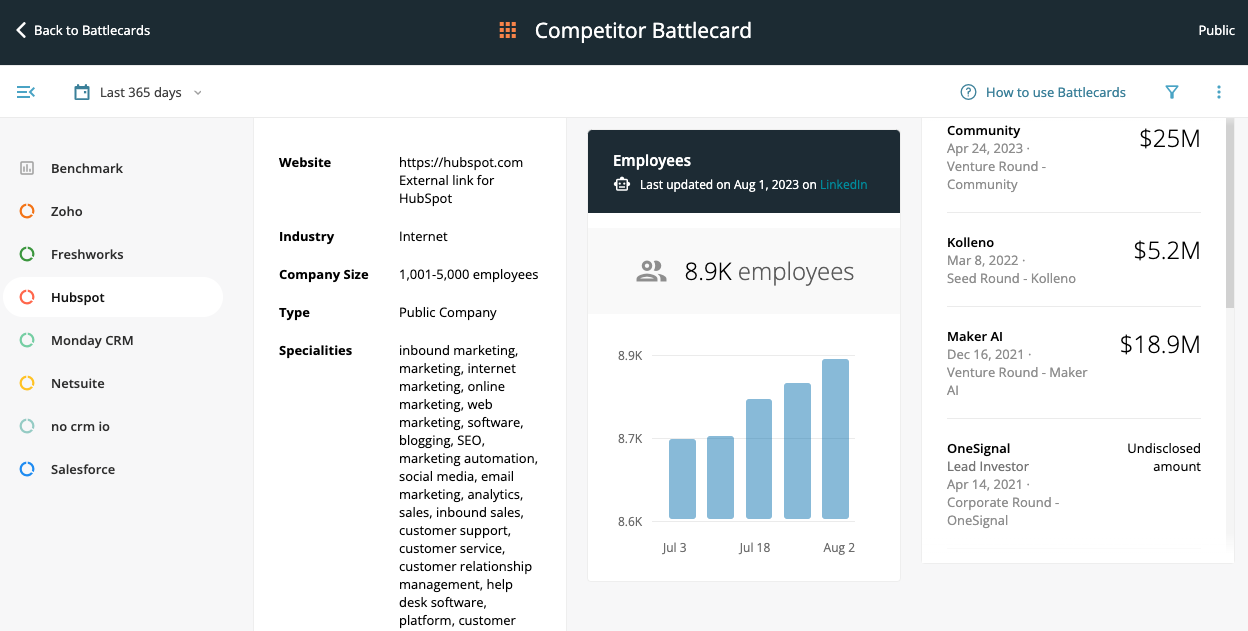
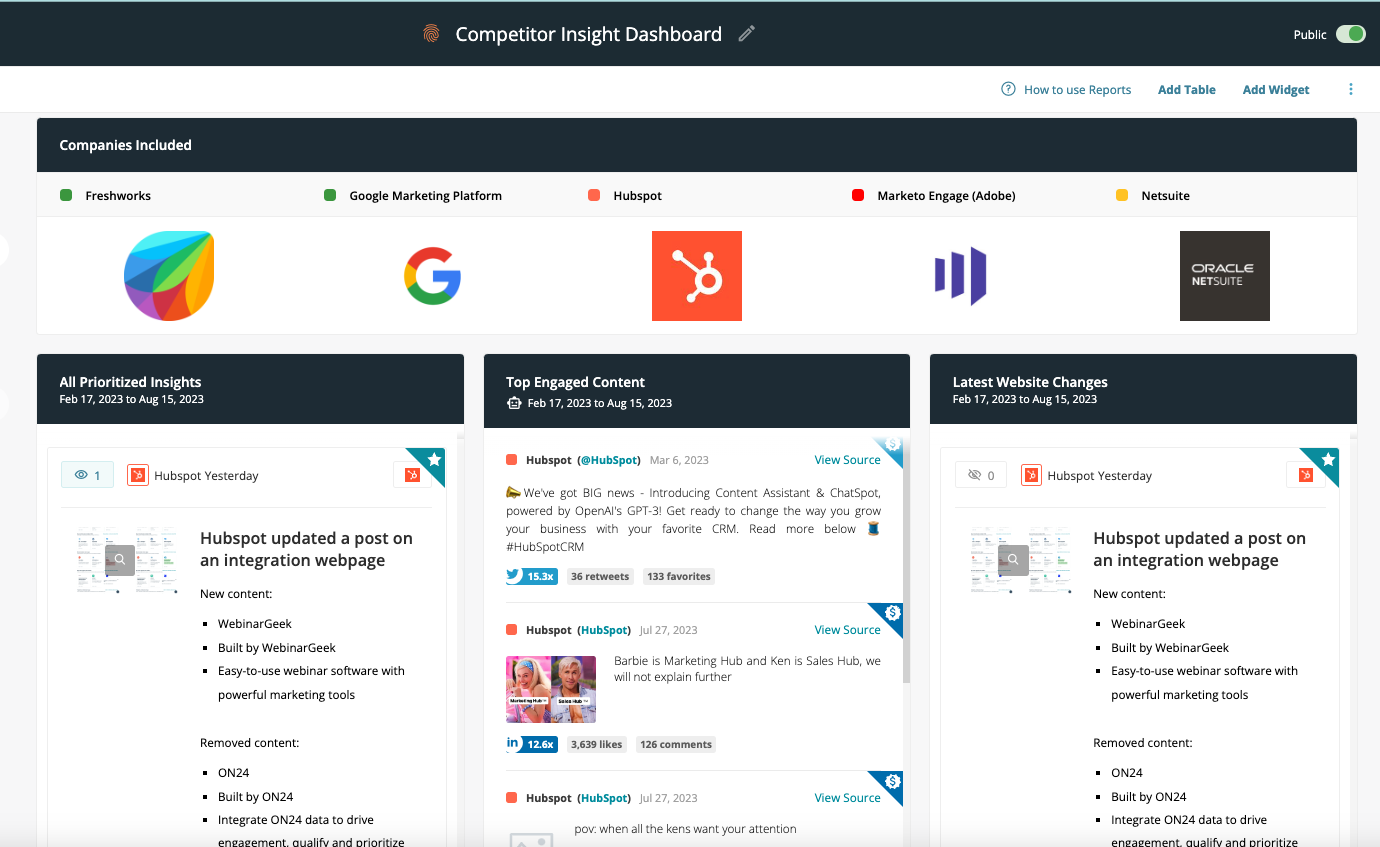
These tools can shave hours off maintaining your entire competitive intelligence program each week. For example, the Battlecard template is customizable with widgets that suit your particular needs.
Plus, these widgets automatically update to give you the freshest data possible.
As you stand at the base of your metaphorical pyramid, scanning the vast potential of LinkedIn's landscape for competitive intelligence gems, remember — like every towering pyramid, every worthwhile endeavor starts with a single, carefully-placed brick.
So, gear up. Grab your chisel. Seek out those precious informational nuggets hiding in LinkedIn's corners. Success lies within your grasp, and while the construction project might seem daunting, it’s a monument that, when built, will stand in glory, offering a commanding view over the competitive horizon. We're here to guide you through your pyramid building journey, brick by brick. So, are you ready to create something monumental?
Download the free template and start making the most of your LinkedIn competitive intelligence today.
The business world is in a constant state of evolution, even the competitive intelligence (CI) industry is in a continual state of flux. Find out...
When it comes to building a winning Competitive and Market Intelligence initiative, we can learn a lot from the movies.
Knowing everything happening in your industry at every moment would be great. But unless your industry is tiny, it’s not practical. What makes more...
Be the first to know about new B2B SaaS Marketing insights to build or refine your marketing function with the tools and knowledge of today’s industry.